
The First Universalist Society of Salem is a historic Universalist former church building at 211 Bridge Street in Salem, Massachusetts.

Rev. Daniel Putnam House is a historic late First Period colonial house in North Reading, Massachusetts. Built in 1720, it is a 2+1⁄2-story wood-frame structure, five bays wide, with a side-gable roof, central chimney, and a Federal/Greek Revival entry surround. The house is distinctive in having an extremely well-preserved interior chamber, with intact plaster and paint. The house is owned by the town of North Reading. It is the headquarters of the North Reading Historical and Antiquarian Society. The house is open Society meetings and for special events. The house was added to the National Register of Historic Places in 1990.

The Asa M. Cook House is a historic house in Reading, Massachusetts. The 2+1⁄2-story wood-frame Second Empire house was built in 1872 for Asa M. Cook, an American Civil War veteran who commuted by train to a job at the United States custom house in Boston. The house is one of the most elaborately detailed of the style in Reading, with pedimented windows, rope-edge corner boards, and dormers with cut-out decoration in the mansard roof.
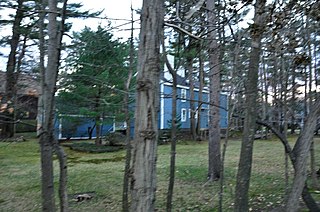
The Batchelder House is a historic house at 607 Pearl Street in Reading, Massachusetts. Built about 1783, it is a good local example of Federal period architecture. It is also significant for its association with the locally prominent Batchelder family, and as an early shoemaking site. The house was listed on the National Register of Historic Places in 1984.
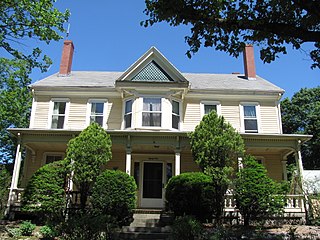
The Carter Mansion is a historic house located in Reading, Massachusetts.
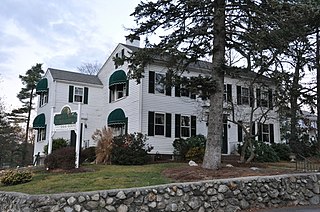
The George Batchelder House is a historic house in Reading, Massachusetts. Built in 1825, it is a prominent local example of Federal period architecture. It was listed on the National Register of Historic Places in 1984. It currently houses professional offices.

The Harnden–Browne House is a historic house at 60-62 Salem Street in Reading, Massachusetts, exemplifying the adaptation of older buildings to new architectural styles. The 2+1⁄2-story wood-frame house was built in 1831 by Sylvester Harnden, likely in a Georgian-Federal vernacular style. Later in the 19th century it was restyled with some Queen Anne details, and converted to a boarding house. In 1928 it was owned by Thomas Browne, an Irish immigrant who first roomed in the house.
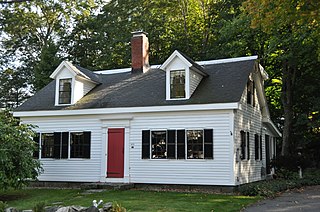
The House at 483 Summer Avenue in Reading, Massachusetts, USA, is a modestly decorated vernacular Federal style cottage. The 1+1⁄2-story wood-frame house was built c. 1830, late for a Federal style building. Its significant Federal features are its five-bay facade, side-gable roof, and the door surround, which has pilasters supporting a tall entablature with a projecting cornice. The house is finished in wooden clapboards, and has two gabled dormers projecting from the front roof.

The James Nichols House is a historic house in Reading, Massachusetts. Built c. 1795, this 1+1⁄2-story gambrel-roofed house is built in a vernacular Georgian style, and is a rare local example of the style. The house was built by a local shoemaker and farmer who was involved in a religious dispute that divided the town. The house was listed on the National Register of Historic Places in 1984.

The Jerry Nichols Tavern is an historic house in Reading, Massachusetts. It is a 2+1⁄2-storey wood-frame structure, five bays wide, with a side gable roof, central chimney, and clapboard siding. The main entrance is flanked by pilasters and topped by an entablature. The oldest portion of the house was built in 1785 by Jeremiah Nichols, a Revolutionary War veteran, farmer, and shoemaker. This property was where Reading's minute companies drilled prior to the American Revolutionary War, and where its powder magazine was kept. The building was expanded 1810–13, and had by 1830 been adapted as a tavern and stage coach stop. In 1824 it was bought by Rev. Peter Sanborn, in whose family it remained into the 1940s.

The Joseph Parker House is a historic house at 107 Grove Street in Reading, Massachusetts. The 2+1⁄2-story wood-frame house was probably built around 1795, when it first appeared on local maps. It is predominantly Federal in its styling, with smaller second-story windows and boxed cornices. Its center entry surround is a Greek Revival feature, with an architrave surround with corner blocks and half-length sidelight windows. The house's notable occupants include Loea Parker, who died in the War of 1812, and F. Howard Gilson, an early experimenter in photography. From 1910 to 1932 it was owned by the Fathers' and Mothers' Club, which used it as a country retreat for urban youth.

The Stillman Parker House is a historic house at 484 Summer Avenue in Reading, Massachusetts. Probably built in the 1850s, it is a rare local variant of transitional Federal/Greek Revival styling. The 1+1⁄2-story wood-frame house has a high-pitched roof which extends over the front porch, which is supported by fluted Doric columns. The doors and windows have Greek Revival architrave surrounds. The house belonged to Stillman Parker, a local shoe manufacturer who also served on the town's board of selectmen.

The Stillman Pratt House is a historic house at 472 Summer Avenue in Reading, Massachusetts. The 1+1⁄2-story wood-frame house, probably built in the late 1840s, is a rare local variant of a combined Federal-Greek Revival style house. It follows the Federal style of placing the roof gables at the sides, but its roof extends over the front porch, which is supported by four fluted Doric columns. The house's corner pilasters are decorated with the Greek key motif, and its windows and doors have architrave surrounds with corner blocks.
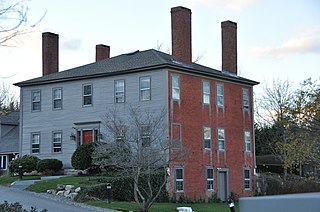
The Thomas Symonds House is a historic house at 320 Haverhill Street in Reading, Massachusetts. Built sometime between 1775 and 1836 by Thomas Symonds, Jr., it is the only Federal period brick-ended house in the town, and is unusually architecturally sophisticated for the period in the town. The house was listed on the National Register of Historic Places in 1984.

The Timothy Hartshorn House is a historic house in Reading, Massachusetts. This 2+1⁄2-story wood-frame house was built c. 1787 by Timothy Hartshorn, a farmer and shoemaker, and remained in his family for over 100 years. It is a vernacular Georgian-Federal style, with five bays and a central chimney. The main entrance is flanked by sidelight windows and fluted pilasters, supporting an entablature with high capitals, but is somewhat obscured by the 19th century porch.

The Washington Damon House is a historic house in Reading, Massachusetts, exhibiting the adaptation of existing housing stock to new architectural style. The 2+1⁄2-story wood-frame house was built in 1839, and was at the time a fairly conventional side hall Greek Revival house, although it has small wings on either side that also appear date to that period. It was significantly renovated in 1906, when the wraparound porch was added, as was the Palladian window in the front gable end. When made, these additions included Greek Revival elements that were sensitive to those already present on the structure.
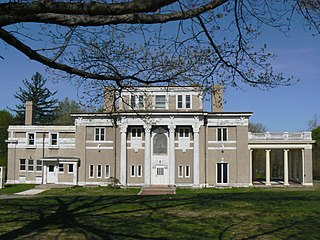
The Sanborn House is one of the few surviving country house models in Winchester, Massachusetts. Nine and one-half acres of property was purchased in 1904 by Oren Sanborn, younger son of James Sanborn, the co-founder of Chase & Sanborn Coffee Company.

The Parker House is a historic house at 52 Salem Street in Reading, Massachusetts. It is a 2+1⁄2-story vernacular Federal-style wood-frame house, five bays wide, with a side gable roof, clapboard siding, and a granite foundation. Its center entrance is particularly fine, with tall sidelight windows flanked by pilasters, and topped by an entablature with a shallow hood. The house was built in 1792, although its center chimney may date from an older house built on the site in 1715. Jonas Parker, the builder, was active in the American Revolution. A portion of Parker's farm was dedicated as Memorial Park in 1919.
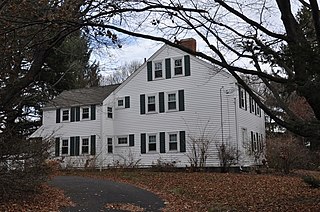
The Jonas Cowdry House is a historic house at 61 Prospect Street in Wakefield, Massachusetts. Built c. 1833, the Federal style wood-frame house is three bays wide and four deep, a significant local variant to conventional Federal style architecture. The house was listed on the National Register of Historic Places in 1989.

The Deacon Thomas Kendall House is a historic house at One Prospect Street in Wakefield, Massachusetts. This timber frame, 2+1⁄2-story five-bay house has Federal styling, but its massive central chimney indicates that parts of the house likely predate the Federal period, and in a style that predates 1750. The house is believed to have suffered fire damage in 1786 and been reconstructed at that time, incorporating salvaged materials. Its exterior trim exhibits several different styles, that on the north and west sides more finely carved. The second-floor windows on the south side are smaller and set near the eaves, a typical colonial period feature. The house was listed on the National Register of Historic Places in 1989.























